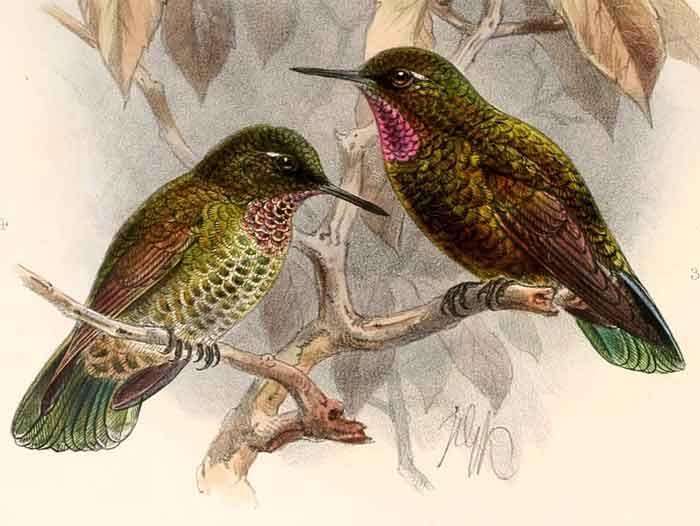
Superregnum: Eukaryota
Cladus: Unikonta
Cladus: Opisthokonta
Cladus: Holozoa
Regnum: Animalia
Subregnum: Eumetazoa
Cladus: Bilateria
Cladus: Nephrozoa
Superphylum: Deuterostomia
Phylum: Chordata
Subphylum: Vertebrata
Infraphylum: Gnathostomata
Megaclassis: Osteichthyes
Cladus: Sarcopterygii
Cladus: Rhipidistia
Cladus: Tetrapodomorpha
Cladus: Eotetrapodiformes
Cladus: Elpistostegalia
Superclassis: Tetrapoda
Cladus: Reptiliomorpha
Cladus: Amniota
Classis: Reptilia
Cladus: Eureptilia
Cladus: Romeriida
Subclassis: Diapsida
Cladus: Sauria
Infraclassis: Archosauromorpha
Cladus: Crurotarsi
Divisio: Archosauria
Cladus: Avemetatarsalia
Cladus: Ornithodira
Subtaxon: Dinosauromorpha
Cladus: Dinosauriformes
Cladus: Dracohors
Cladus: Dinosauria
Cladus: Saurischia
Cladus: Eusaurischia
Subordo: Theropoda
Cladus: Neotheropoda
Cladus: Averostra
Cladus: Tetanurae
Cladus: Avetheropoda
Cladus: Coelurosauria
Cladus: Tyrannoraptora
Cladus: Maniraptoromorpha
Cladus: Maniraptoriformes
Cladus: Maniraptora
Cladus: Pennaraptora
Cladus: Paraves
Cladus: Eumaniraptora
Cladus: Avialae
Infraclassis: Aves
Cladus: Avebrevicauda
Cladus: Pygostylia
Cladus: Ornithothoraces
Cladus: Ornithuromorpha
Cladus: Carinatae
Parvclassis: Neornithes
Cohors: Neognathae
Cladus: Neoaves
Superordo: Caprimulgimorphae
Ordo: Apodiformes
Familia: Trochilidae
Subfamilia: Trochilinae
Genus: Metallura
Species: Metallura baroni
Name
Metallura baroni Salvin, 1893
Type locality: Mountains near Cuenca, 12,000 ft., Ecuador.
Synonyms
Metallura eupogon baroni Salvin, 1893
References
Salvin, O. 1893. Descriptions of two supposed new species of Metallura from Ecuador. Bulletin of the British Ornithologists' Club 1 no.9: 49–50 BHL. London. Reference page.
Links
IUCN: Metallura baroni (Endangered)
Vernacular names
català: Colibrí de cua metàl·lica gorjamorat
Cymraeg: Sïedn cynffonloyw gyddf fioled
Deutsch: Violettkehl-Glanzschwänzchen
English: Violet-throated Metaltail
español: Metalura de Azuay
suomi: Violettimetallipyrstö
français: Métallure de Baron
Nederlands: Violetkeelglansstaartkolibrie
svenska: violettstrupig glansstjärt
The violet-throated metaltail (Metallura baroni), locally called metalura gorjivioleta, is an Endangered species of hummingbird in the "coquettes", tribe Lesbiini of subfamily Lesbiinae. It is endemic to Ecuador.[3][4][1]
Taxonomy and systematics
The violet-throated metaltail is monotypic. At one time it was treated as a subspecies of what is now the fiery-throated metaltail (Metallura odomae).[3][5] The species name commemorates the collector Oscar Theodor Brown.
Description
The violet-throated metaltail is 10 to 11 cm (3.9 to 4.3 in) long. Males weigh 4.3 to 4.5 g (0.15 to 0.16 oz) and females 3.9 to 5 g (0.14 to 0.18 oz). It has a medium length, straight, black bill. The adult male has dark olive green upper- and underparts. Its gorget is purple-violet. Its slightly forked tail is iridescent violaceous sky blue on its upper side and glittering yellow-green on its underside. The adult female's upperparts are also dark olive green. Its throat is a duller version of the male's and its breast, and belly are whitish gray spotted with olive green. Its outer tail feathers have whitish tips on their underside. Juveniles are similar to adult females.[6]
Distribution and habitat
The violet-throated metaltail is found only on the Cajas Plateau west of the city of Cuenca, Ecuador. The plateau straddles the border of Azuay and Cañar provinces. It inhabits the edges of elfin forest and Polylepis woodlands and adjacent páramo grasslands. Its favored landscape is characterized by boulders with a cover of bromeliads, Ericaceae, and ferns and mosses. In elevation it normally ranges between 3,000 and 3,900 m (9,800 and 12,800 ft) but was once reported as low as 1,900 m (6,200 ft).[6]
Behavior
Movement
The violet-throated metaltail's movements, if any, have not been documented, but some seasonal elevational movement is thought possible.[6]
Feeding
The violet-throated metaltail forages for nectar by hovering; it feeds on a variety of flowering vegetation at any level of its habitat. Males defend feeding territories.[6]
Breeding
The violet-throated metaltail is thought to nest between November and February. One nest was described as resembling a slipper without a heel; it was made of moss, twigs, and wool. The female incubates the clutch of two white eggs; the incubation and nestling periods are not known.[6]
Dickcissel male perched on a metal pole singing, with neck stretched and beak open.
Songs and calls
Listen to violet-throated metaltail on xeno-canto
Vocalization
A violet-throated metaltail vocalization has been described as "a descending series of 3–5 squeaky notes, followed by several jumbled ones, 'trsee-seee-seee-sew..trr-tsee-tse-tsew..trr-tsee-tse-tsew'." It is thought to be either a song or a chasing call.[6]
Status
The IUCN originally assessed the violet-throated metaltail as Threatened. The assessment was changed to Vulnerable in 1994 and to the present Endangered in 2000. Its population is estimated at fewer than 1700 mature individuals and is believed to be decreasing.[1] Its range includes El Cajas National Park and the small adjoining Río Mazán reserve. However, outside those areas and even within the national park its habitat is under threat by burning to create pasture.[6]
References
BirdLife International (2016). "Violet-throated Metaltail Metallura baroni". IUCN Red List of Threatened Species. 2016: e.T22687993A93178854. doi:10.2305/IUCN.UK.2016-3.RLTS.T22687993A93178854.en. Retrieved 4 March 2022.
"Appendices | CITES". cites.org. Retrieved 2022-01-14.
Gill, F.; Donsker, D.; Rasmussen, P., eds. (January 2022). "Hummingbirds". IOC World Bird List. v 12.1. Retrieved January 15, 2022.
HBW and BirdLife International (2020) Handbook of the Birds of the World and BirdLife International digital checklist of the birds of the world Version 5. Available at: http://datazone.birdlife.org/userfiles/file/Species/Taxonomy/HBW-BirdLife_Checklist_v5_Dec20.zip [.xls zipped 1 MB] retrieved 27 May 2021
Remsen, J. V., Jr., J. I. Areta, E. Bonaccorso, S. Claramunt, A. Jaramillo, D. F. Lane, J. F. Pacheco, M. B. Robbins, F. G. Stiles, and K. J. Zimmer. Version 31 January 2022. A classification of the bird species of South America. American Ornithological Society. https://www.museum.lsu.edu/~Remsen/SACCBaseline.htm retrieved February 1, 2022
Heindl, M., E. de Juana, P. F. D. Boesman, G. M. Kirwan, and C. J. Sharpe (2020). Violet-throated Metaltail (Metallura baroni), version 1.0. In Birds of the World (J. del Hoyo, A. Elliott, J. Sargatal, D. A. Christie, and E. de Juana, Editors). Cornell Lab of Ornithology, Ithaca, NY, USA. https://doi.org/10.2173/bow.vitmet1.01
Retrieved from "http://en.wikipedia.org/"
All text is available under the terms of the GNU Free Documentation License

